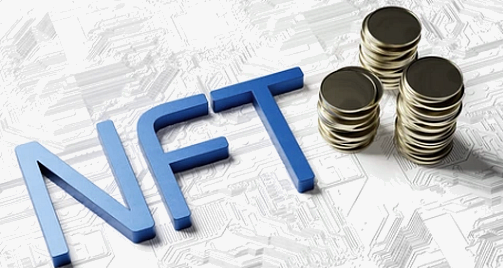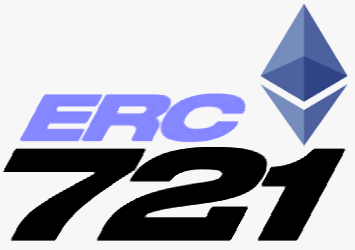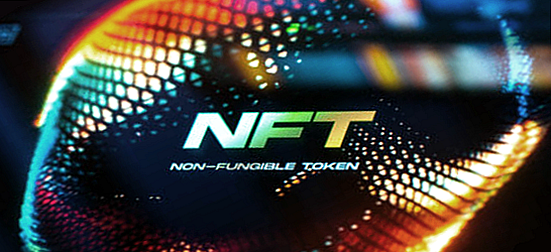Accredited InvestorsAltcoinAnatoli UnitskyAnti-Money Laundering (AML) In CryptoAPIArbitrageArtCoin TokenArticle DirectoryASICAuction Terminology GlossaryBasics of Stock Market InvestingBear MarketBest Crypto Payment Provider In the WorldBitcoinBlockchainBlockchain ConfirmationBlockchain Consensus MechanismBlockchain ForkBlockchain GlossaryBored Ape Yacht ClubBuild a Business That OutperformsBull MarketBuying SkyWay SharesByzantine Fault Tolerance (BFT) ExplainedCasascius CoinCentral Bank Digital Currency (CBDC)Centralized Crypto ExchangeCoinCoinsetCold WalletCollateralCommodity Futures Trading Commission (CFTC)Cross-Chain TechnologyCRUCrypto ExchangeCrypto GlossaryCrypto JokesCrypto Terms to KnowCrypto TickerCryptocurrencyCryptographyCryptojackingCryptounit BlockchainCryptounit GlossaryCryptounit ProgramdApp (Decentralized Application)Dead CoinDecentralized Exchange (DEX)Decentralized Finance (DeFi)Difference Between Bitcoin and EthereumDifferent Ways of Investing MoneyDigital CurrencyDistributed LedgerDo Your Own Research (DYOR)Dollar Cost Averaging (DCA)Dow Jones Industrial Average (DJIA)EncryptionERC-20ERC-721EthereumEvoScentFear Of Missing Out (FOMO)Fear, Uncertainty and Doubt (FUD)Fiat MoneyFNT Fintech CompanyGenesis BlockGlobal Unit PayGlossary of Banking TermsGlossary of Business TermsGlossary of Financial TermsHalvingHODLHot WalletHow Do I Start InvestingHow Rich is Satoshi Nakamoto?How to Create a BlockchainHow to Find Private InvestorsHow to Get Into FintechHow to Program Smart ContractsI Am Thrilled to Be a Part of This Global ProjectInitial Coin Offering (ICO)Initial Public Offering (IPO)Initial Token Offering (ITO)Innovation Basalt TechnologyInnovative Transportation TechnologiesInternational Bank Account Number (IBAN)Investing in Gold Mining StocksInvesting in Gold MiningJagerJoy of Missing Out (JOMO)Know Your Customer (KYC)LedgerLiquidity in CryptocurrencyMaker and Taker Fees in Crypto TradingMarket Capitalization (Market Cap)Meme CoinMetal Credit CardMetaMaskMillenials Now Have Access to Generational WealthMy Best Investment EverNew Digital EvolutionNFT GlossaryOff-Chain TransactionsOn-Chain TransactionsOpen Edition NFTPeer-to-Peer (P2P)Personal Loan GlossaryProbably the Best STO on the MarketProof of Stake (PoS)Real Estate Glossary of TermsReal Estate Investing GlossaryRebase TokenSecurities and Exchange Commission (SEC)Security Token ExchangesSecurity Token Offering (STO)Soulbound Decentralized Identities for Security TokensSoulbound ID Launch by Stobox Proves a SuccessSoulbound TokensStoboxStock Market GlossaryTestimonialsTether Platform and Token (USDT)UnitEx ExchangeUnitsky String TechnologiesUNTBUSDUValidatorWe Started Investing When We Were 25What are Blue Chip NFT?What are Blue Chip Stocks?What are Crypto Assets?What are Crypto Smart Contracts?What are CryptoPunks NFT?What are Digital Assets?What are Digital Collectibles?What are Gas Fees?What are Gas Wars?What are Hashmasks?What are Non Fungible Tokens?What are Non-Sufficient Funds (NSF)?What are Soulbound Tokens (SBT)?What are Stablecoins in Crypto?What are Transactions Per Second (TPS)?What are Utility NFTs?What are Utility Tokens?What Does Burning Crypto Mean?What Does Diamond Hands Mean?What Does Paper Hands Mean?What Does To The Moon Mean?What Does WAGMI Mean?What Happened to Satoshi Nakamoto?What is a 51% Attack?What is a Baby Boomer?What is a Backlink?What is a Banner?What is a Barcode?What is a Bid-Ask Spread in Crypto?What is a Block in Blockchain?What is a Block Reward?What is a Blockchain Address?What is a Blockchain Node?What is a Blockchain Oracle?What is a Blog?What is a Bond?What is a Bot?What is a Broker?What is a Business Accelerator?What is a Cash Cow?What is a Commercial Bank?What is a Commodity?What is a Con?What is a Credit?What is a Credit Limit?What is a Credit Rating?What is a Crypto Airdrop?What is a Crypto Bridge?What is a Crypto Scam?What is a Crypto Token?What is a Crypto Wallet?What is a Crypto Whale?What is a Crypto Winter?What is a Cryptocurrency Public Ledger?What is a Cryptocurrency Roadmap?What is a DAO?What is a Dark Pool?What is a Day Trader?What is a Dead Cat Bounce?What is a Default?What is a Derivative?What is a Digital Credit Card?What is a Fiscal Quarter?What is a Fungible Token?What is a Governance Token?What is a Grace Period?What is a Hard Fork?What is a Hot Wallet?What is a Hybrid Blockchain?What is a Hybrid PoW/PoS?What is a Joint Account?What is a Market Cap?What is a Merkle Tree in Blockchain?What is a Mining Farm?What is a Nonce? What is a PFP NFT?What is a POS System?What is a Prepaid Card?What is a Private Blockchain?What is a Private Key?What is a Public Blockchain?What is a Public Key?What is a Reserve Currency?What is a Ring Signature?What is a Routing Number?What is a Rug Pull in Crypto?What is a Safe Deposit Box?What is a Satoshi?What is a Security Token?What is a Seed Phrase?What is a Shitcoin?What is a Sidechain?What is a Soft Fork?What is a Spot Market?What is a State Bank?What is a SWIFT Code?What is a Tax Identification Number (TIN)?What is a Time Deposit?What is a Transaction Account?What is a Variable Interest Rate?What is a Virtual Assistant (VA)?What is a Virtual Card?What is a Virtual Currency?What is a Visa Card?What is a Whitelist in Crypto?What is a Whitepaper?What is Accounts Payable (AP)?What is AMA in Crypto?What is Amortization?What is an Accrual?What is an ACH Transfer?What is an Actuary?What is an Addendum?What is an Algorithm?What is an Angel Investor?What is an Annuity?What is an Asset?What is an ATM?What is an Atomic Swap?What is an Audit?What is an Avatar?What is an EIN?What is an Embargo?What is an Entrepreneur?What is an IDO (Initial Dex Offering)?What is an Interest Rate?What is an Internet cookie?What is an Investment Bank?What is an NFT Drop?What is an NFT Floor Price?What is an Ommer Block?What is an Orphan Block?What is an Outstanding Check?What is an Overdraft?What is Artificial Intelligence (AI)?What is B2B (Business-to-Business)?What is B2G (Business-to-Government)?What is Bartering?What is Bitcoin Dominance?What is Bitcoin Pizza Day?What is Blockchain Immutability?What is Blockchain Used For?What is BRICS?What is Business-to-Consumer (B2C)?What is C2C (Customer to Customer)?What is Capitalism?What is Catfishing?What is CFD Trading?What is Check Kiting?What is Cloud Mining?What is Communism?What is Content Marketing?What is Decentralization in Blockchain?What is DeFi in Crypto?What is Delisting?What is Depreciation?What is Digital Marketing?What is Diversification?What is Double Spending?What is Dumb Money?What is Dumping?What is Earnings Per Share (EPS)?What is Economics?What is Email Marketing?What is Equity?What is Etherscan?What is Fintech?What is Foreign currency?What is Forex?What is Fundamental Analysis (FA)?What is GameFi?What is Generative Art NFT?What is Gwei?What is Hard Currency?What is Hash Rate?What is Hashing in Blockchain?What is Inflation?What is Initial Game Offering (IGO)?What is Interest?What is Interest Income?What is Mainnet?What is Mastercard?What is Metaverse in Crypto?What is Mining in Cryptocurrency?What is Minting NFT?What is Mobile Banking?What is Money Laundering?What is NFT Alpha?What is NFT Metadata?What is NFT Rarity?What is NGMI Meaning?What is Nominal Interest Rate?What is Online Banking?What is Open-End Credit?What is OpenSea NFT Marketplace?What is Personal Identification Number (PIN)?What is Play-to-Earn?What is Polygon?What is Proof of Authority (PoA)?What is Proof of Work (PoW)?What is Public Key Cryptography?What is Pump and Dump?What is Quantum Computing?What is Refinancing?What is Retail Banking?What is Ripple?What is Sharding?What is Slippage in Crypto?What is Smart Money?What is Solvency?What is Soulbound ID?What is SSL?What is Staking in Cryptocurrency?What is Technical Analysis (TA)?What is Testnet?What is the Ask Price?What is the Better Business Bureau (BBB)?What is the Bid Price?What is the Dark Web?What is the InterPlanetary File System (IPFS)?What is the Gold Standard?What is the Lightning Network?What is the Prime Rate?What is the Sandbox?What is the Secondary Market?What is the World Bank?What is Tier 1 Capital?What is Tokenomics?What is TRC-20?What is Universal Banking?What is Unspent Transaction Output (UTXO)?What is Usury?What is Volatility in Crypto?What is Wash Trading?What is Web3?What is Whisper?What is XRP?What is Zero-Knowledge Proof (ZKP)?Who is Beeple?Who is Satoshi Nakamoto?Who is Vitalik Buterin?Why Tokenization is a Safe HavenWhy You Should Try Your Hand at Trading
What is Minting NFT?
- Home
- NFT Glossary
- What is Minting NFT?
It's likely that you've come across the question, "Why can't I just take a screenshot of an NFT?"

The answer lies in the process of minting. When you mint an NFT, it gets stored on the blockchain, which establishes its authenticity and ownership. The immutability of the blockchain record makes minting the starting point of the NFT's unchanging history.
What is Minting NFT?
Minting an NFT involves converting digital files into crypto collections or digital assets stored on the blockchain. The decentralized database or distributed ledger stores these files, making them uneditable, unmodifiable, and undeletable. Like creating physical currency, the act of uploading a specific item to the blockchain is referred to as minting. Creators of NFTs can also set royalties from each subsequent sale during the minting process, which becomes a commission they receive every time their work is sold or traded on the secondary market.
How to Mint an NFT?
To mint an NFT from scratch, you need access to a crypto blockchain and an NFT marketplace. Minting an NFT means publishing a unique token on the blockchain to make it available for purchase. The process can be simplified by following a few steps. First, create a digital wallet that securely stores cryptocurrency, such as Coinbase, MetaMask, or Rainbow. Next, purchase a small amount of cryptocurrency to cover the minting cost. Then, link your wallet to an online marketplace like Rarible, or OpenSea.
Once your wallet is set up, you can begin minting your NFT. Start by creating a digital file, such as a JPEG, MP3, GIF, or PNG, that is compatible with the preferred marketplace and not copyrighted. You can create a single image or multiple images and add a name, description, price, and other metadata depending on the marketplace. Once you've created the NFT, the marketplace will charge a small fee for publishing it, which will be deducted from your wallet. This process adds metadata and publishes your NFT, making it "minted" and available for sale on the marketplace. You can also keep the NFT private or set royalty amounts for secondary sales.
Minting your NFTs can be a valuable revenue stream, especially for digital artists. While there are more complex methods for coding and creating NFTs, online marketplaces and wallets make it easy to create sellable digital artwork. Some marketplaces even provide real-time updates on NFT sales, listing the biggest sellers.
Should You Mint or Buy NFTs: A Guide to the Pros and Cons
If you're interested in the NFT market and want to own a piece of it, you may be wondering whether it's better to buy an NFT or mint one yourself. Both options have their advantages and disadvantages, and it ultimately depends on your risk tolerance and budget.
One of the main factors to consider when deciding between buying or minting an NFT is the level of risk involved. Buying an NFT from a reputable marketplace provides you with a lot of information about the listing and the seller's history. On the other hand, minting an NFT from scratch can be unpredictable, and there's no guarantee that your creation will sell.
Cost is also a crucial consideration. Minting your own NFT is generally cheaper, with minimal commission or gas fees required. However, buying an NFT can come with a range of costs depending on the project's popularity and demand.
While buying an NFT can be a simpler process, minting your own NFT can be highly rewarding and profitable in the long run. To help you make an informed decision, there are various analytics tools available to research and analyze NFT collections and identify smart investments.
Ultimately, whichever option you choose, it's essential to do your research and understand the marketplace or platform you're using before diving into the world of NFTs.
Minting NFTs on OpenSea
OpenSea, a popular NFT marketplace built on the Ethereum blockchain, offers an easy and convenient way to mint your own NFTs. In addition to traditional minting, OpenSea also provides "lazy minting" which allows you to list your item for sale without paying gas fees upfront.
To get started with minting on OpenSea, here are the steps you need to follow:
- Set up your crypto wallet - A crypto wallet is necessary for any transaction on the blockchain. You will need a wallet to hold your NFTs and cryptocurrency.
- Create a collection - Before you can mint your NFTs, you need to create a collection to which they will belong. Choose a name and description for your collection, select a category, and add any relevant social links.
- Upload your work - Once you have set up your wallet and created a collection, you are ready to start minting your NFTs. Upload your work, add metadata such as a title and description, and set a price for your NFT.
With these simple steps, you can create your own NFTs on OpenSea and join the exciting world of digital art and collectibles.
Minting NFTs on Rarible
Rarible has become a popular marketplace for NFT creators, and with its latest feature called "Lazy Minting," the process has become even more accessible. Here's a step-by-step guide to get started:
- Connect your crypto wallet to Rarible.com.
- Click on "Create" and provide all the necessary information about your NFT.
- Select "Free Minting" from the drop-down menu.
- Click on "Create Item" and use your wallet to sign the free permission.
- Congratulations! You can now easily and freely mint your NFT. Once the buyer completes the purchase transaction, the NFT will be automatically minted in your wallet and transferred to the new owner. This feature is perfect for newcomers who are still getting familiar with NFTs.
Other Sources To Mint NFTs
While OpenSea and Rarible are some of the most popular marketplaces for minting NFTs, there are also other sources available for creators to explore. Here are some additional platforms to consider:
- SuperRare - SuperRare is a curated platform that features unique and high-quality NFTs. Minting on SuperRare requires an invitation from an existing member or an application process. Once accepted, creators can mint their NFTs and offer them for sale in the marketplace.
- Nifty Gateway - Nifty Gateway is a marketplace that specializes in drops, which are timed releases of limited edition NFTs. Minting on Nifty Gateway requires an application process and approval by the platform. Once approved, creators can participate in drops and offer their NFTs for sale.
- Foundation - Foundation is a platform that focuses on the creative and artistic side of NFTs. Minting on Foundation requires an application process, and once approved, creators can showcase their NFTs in the marketplace.
- Mintable - Mintable is a platform that offers both free and paid options for minting NFTs. Creators can mint their NFTs using a simple drag-and-drop interface and customize their metadata, royalties, and more.
- KnownOrigin - KnownOrigin is a platform that prides itself on its curation and quality control. Minting on KnownOrigin requires an application process, and once approved, creators can showcase their NFTs in the marketplace.
Overall, there are many sources available for creators to mint NFTs, each with its own unique features and requirements. By exploring different platforms, creators can find the best fit for their needs and reach a wider audience with their NFTs.
Related Articles

ERC-721
After minting, the NFTs can be transferred to other Ethereum addresses. The transfer function in the smart contract is responsible for...

What are Non Fungible Tokens (NFTs)?
NFTs are created by a process known as minting, in which the NFT's information is published on a blockchain. At a high level, the minting process involves the creation of a...

What is OpenSea NFT Marketplace?
Free minting NFT using OpenSea's gas-free marketplace.
- Home
- NFT Glossary
- What is Minting NFT?